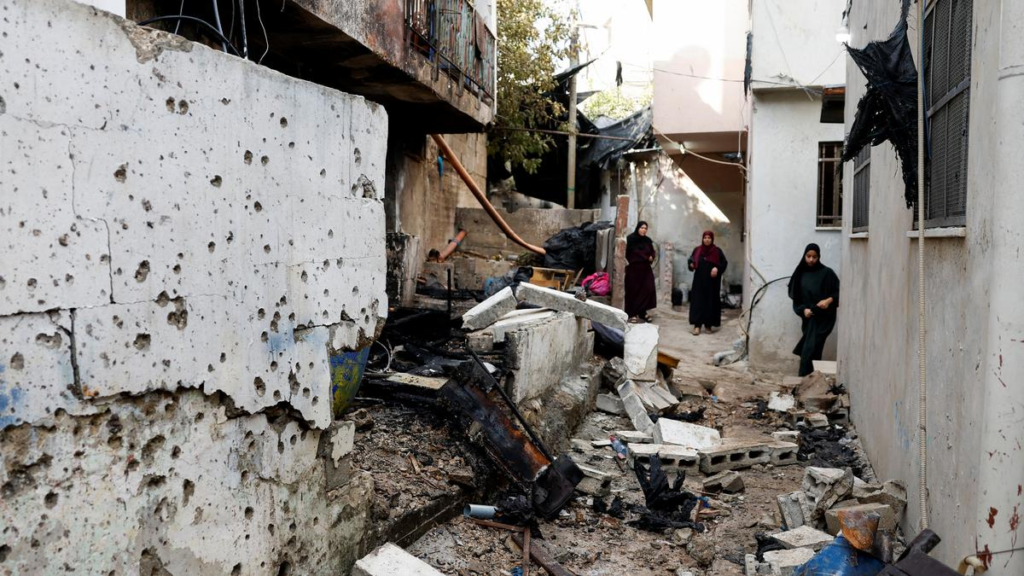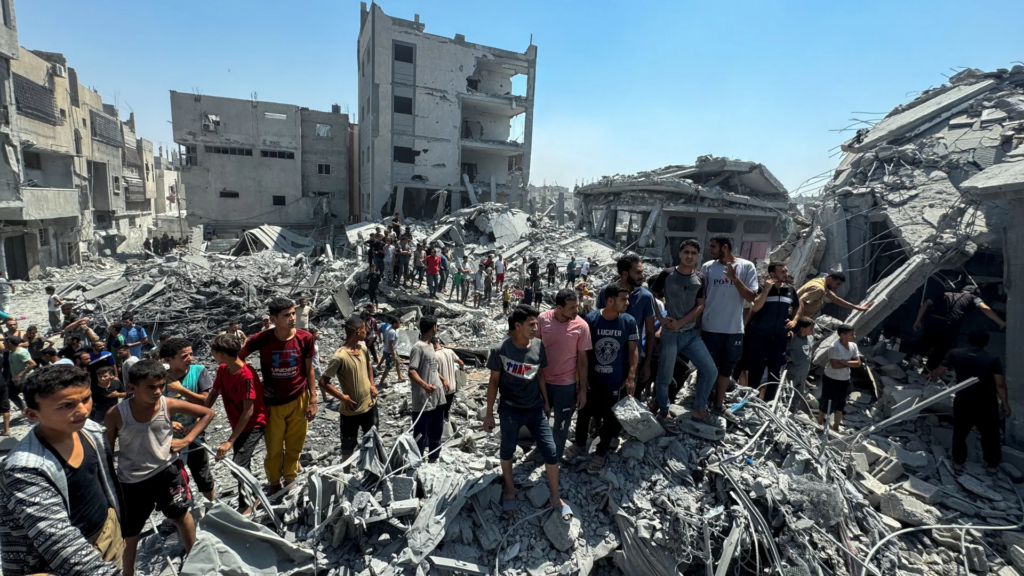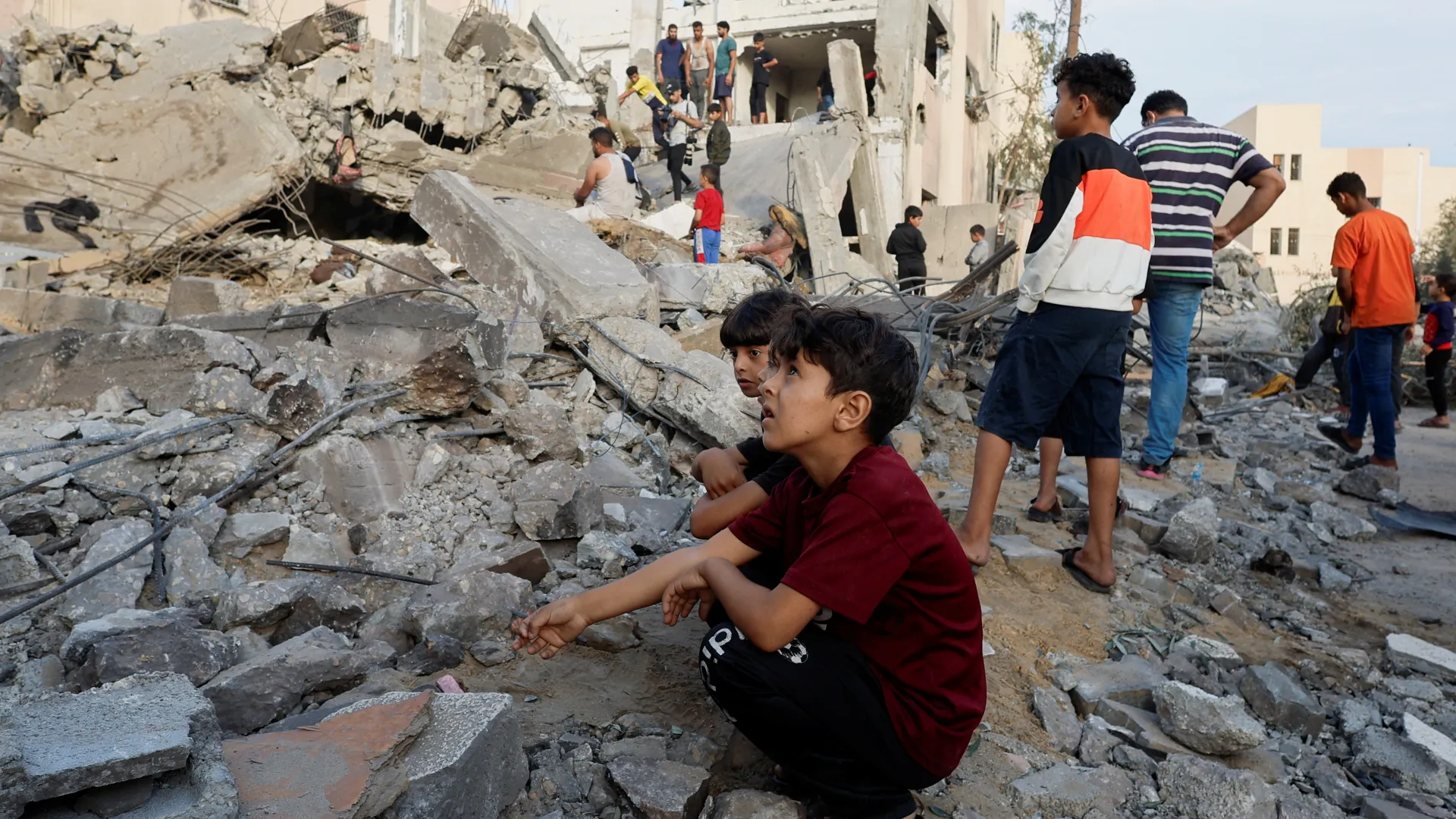The ongoing conflict between Israel and Gaza has once again claimed the lives of innocent civilians, with the latest tragedy involving the death of five children in Gaza. The official Palestinian news agency WAFA reported that an Israeli airstrike in the northern Gaza Strip killed the children as they were playing near a café in the Al-Shati refugee camp.
The deadly attack, carried out by a drone, has drawn international concern as Gaza’s civil defense agency confirmed the devastating toll on minors. The deaths occurred amid continued Israeli airstrikes in the region, which have intensified following the October 7, 2023, attack by Hamas that ignited this conflict.
A Tragic Loss of Innocent Lives
The deaths of the five children in Al-Shati highlight the human cost of the ongoing conflict between Israel and militant groups in Gaza. According to Gaza’s civil defense spokesman, Mahmud Bassal, the children were playing in a refugee camp when they were targeted by an Israeli drone strike.
The attack left a deep mark on the local community, as the young victims were transported to Al-Shifa Hospital, Gaza’s largest medical facility. The news of their deaths sparked mourning and outrage, not only in Gaza but across the globe.
This incident is a sobering reminder that, in war, civilians—and particularly children—often bear the heaviest burden. Gaza has witnessed widespread destruction since the conflict began, with entire neighborhoods and critical infrastructure severely damaged by Israeli airstrikes.
While the Israeli military claims its operations target Hamas militants, the collateral damage to civilians, especially children, has been immense. According to Gaza’s health ministry, more than 42,000 people have been killed over the past year, with the majority being women and children. The United Nations has acknowledged the reliability of these figures, underscoring the magnitude of the humanitarian crisis.
Read : Israeli Foreign Minister Threatens Iran, Saying It ‘Deserves to Be Destroyed’
The drone strike in Al-Shati, which took the lives of the five children, is part of a broader pattern of Israeli airstrikes across the Gaza Strip. Israel’s military has intensified its assault on Gaza in response to the October 7 attack by Hamas, in which over 1,200 Israelis, mostly civilians, were killed.
Read : Israeli Strike Silenced a Beating Heart of Lebanon as it Ruins Nabatiyeh Market
Since then, Israel has sought to dismantle Hamas’ infrastructure and eliminate its leadership, launching a relentless bombing campaign by land, air, and sea. However, the fallout from these operations has extended far beyond the militant group, affecting Gaza’s civilian population of 2.4 million, many of whom have been displaced multiple times over the past year.
Gaza’s Children: The Unseen Casualties of War
The killing of children in Gaza has become an all-too-common occurrence in the ongoing war between Israel and Hamas. Children, who make up a significant portion of Gaza’s population, have borne the brunt of the conflict in unimaginable ways.
Schools, playgrounds, and homes—once safe spaces for young ones—have become targets of airstrikes, leaving children traumatized and vulnerable. The physical and psychological toll on Gaza’s children has been catastrophic.
The Al-Shati refugee camp, where the recent drone strike occurred, is home to thousands of displaced Palestinian families. Many of these families live in overcrowded and impoverished conditions, with limited access to basic necessities such as clean water, electricity, and medical care.
For children living in these conditions, the fear of sudden attacks has become a part of daily life. Many have lost friends, siblings, and parents to the violence, leaving an entire generation scarred by the trauma of war.
Gaza’s health infrastructure, already strained by years of blockade and conflict, has struggled to keep up with the rising number of casualties. Al-Shifa Hospital, where the bodies of the five children were taken, is operating under immense pressure.

The influx of injured civilians, including many children, has overwhelmed medical staff and depleted supplies. The medical community in Gaza has called for international intervention to provide urgent humanitarian assistance, but access to the territory remains restricted due to the ongoing hostilities.
The psychological impact of the war on Gaza’s children is equally devastating. Many suffer from post-traumatic stress disorder (PTSD), anxiety, and depression as a result of living under constant threat. With schools closed due to the conflict and playgrounds turned into battlegrounds, children have few outlets for their grief and fear.
Humanitarian organizations have raised alarm over the long-term consequences of this trauma on Gaza’s younger population, warning that without intervention, the psychological scars of war could last a lifetime.
The Wider Conflict and Its Human Cost
The deaths of the five children in Gaza are part of a much larger and more complex conflict between Israel and Palestinian militant groups, particularly Hamas. The war, now in its second year, began in October 2023 when Hamas launched a surprise attack on southern Israel, killing over 1,200 people, including many civilians.
Israel responded with a military campaign aimed at destroying Hamas’ infrastructure in Gaza, launching airstrikes and ground operations across the territory.
The conflict has resulted in widespread destruction in Gaza, with entire neighborhoods reduced to rubble. According to various reports, nearly the entire civilian population of Gaza has been displaced at least once in the past year, with many families forced to seek refuge in overcrowded shelters or makeshift camps.
The United Nations and various humanitarian organizations have described the situation in Gaza as a humanitarian catastrophe, with urgent calls for a ceasefire and the protection of civilians.
Despite international efforts to broker a ceasefire, both Israel and Hamas remain locked in a cycle of violence. Hamas continues to fire rockets into Israel, while Israel maintains its airstrikes on Gaza. The civilian population, trapped between the two warring sides, continues to suffer unimaginable losses.
The situation has been further complicated by the involvement of other regional actors, such as Hezbollah in Lebanon, which has engaged in cross-border skirmishes with Israeli forces in solidarity with the Palestinians.

The loss of civilian lives, particularly children, has drawn condemnation from human rights organizations and world leaders alike. Many have called for an immediate halt to the violence and for both sides to prioritize the protection of civilians. However, the political and ideological stakes in the conflict make a resolution difficult to achieve.
As Israel seeks to dismantle Hamas and prevent further attacks on its territory, Palestinian groups demand an end to the Israeli blockade and occupation, as well as greater autonomy and rights for Palestinians living in Gaza and the West Bank.
The international community continues to grapple with how to respond to the conflict. While many countries have expressed solidarity with Israel’s right to defend itself, there has also been widespread criticism of the high civilian death toll in Gaza.
Calls for investigations into possible war crimes have been made by various human rights groups, who argue that both Israel and Hamas have violated international law by targeting civilians and failing to distinguish between military and non-military targets.
In conclusion, the deaths of the five children in Al-Shati are a tragic reminder of the devastating human toll of the ongoing conflict in Gaza. As both sides continue to engage in violence, the civilians of Gaza, particularly its children, are paying the highest price.
Without a political solution to the conflict, the cycle of violence is likely to continue, with more lives lost and more families torn apart by the war. The international community must continue to press for a ceasefire and for the protection of civilians, while also working towards a long-term solution that addresses the root causes of the conflict.

